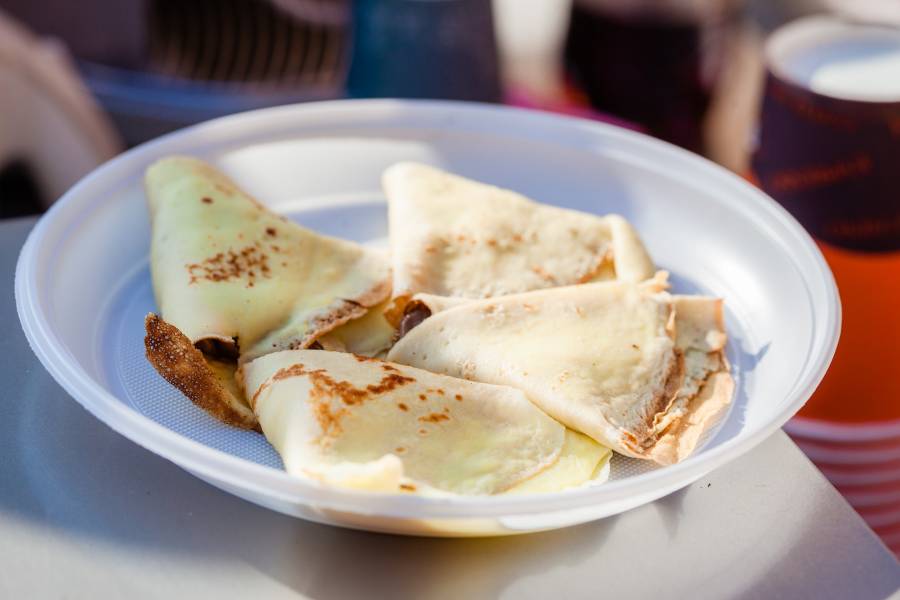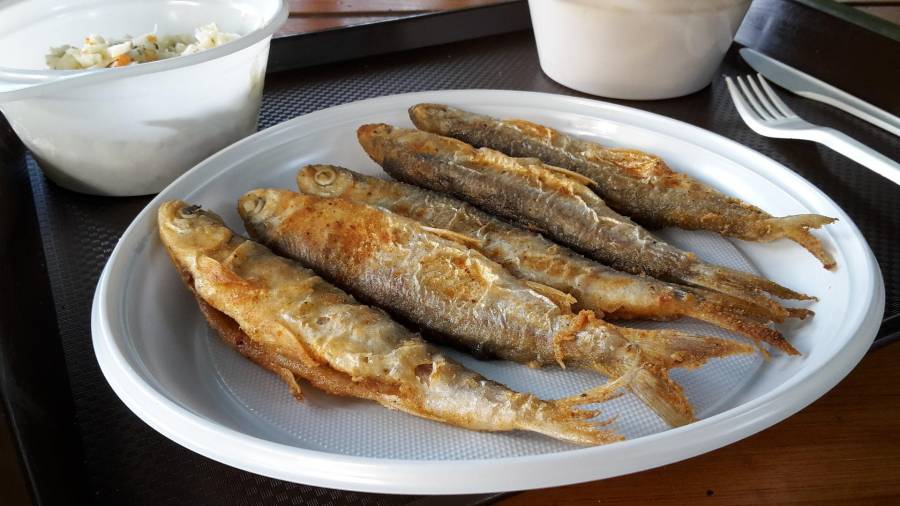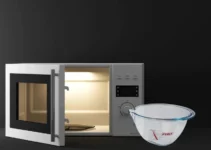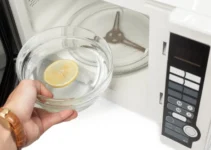We often use plastic plates to serve food while eating and also preserve food in deep freezers. Due to the usefulness of plastic plates, there’s the option of using them to microwave our food.
If you’re going to microwave your food with plastic plates, it’s important to get informed about plastic microwave safety. Hence, the burning question is – are plastic plates microwave-safe?

There are many misconceptions when it comes to putting plastic plates in a microwave oven. Therefore, we will dive deep into all you need to know about plastic plate microwave safety.
The Use of Plastic Plates in Microwave Ovens
Plastic plates are commonly used for heating food in microwave ovens. While this cooking process has become a thing in this current age, there’s a need to consider its overall safety.
But before we look into that, it’s important to know what plastic plates and microwave ovens are all about. This will give you insight into how plastic plates are being used in microwave ovens.
What You Need to Know About Microwave Ovens
The microwave oven will go down as one of the best culinary inventions.
It’s a nice cooking appliance to have in your kitchen as it will make cooking food easier and faster.
This is an electric oven that cooks food by means of high-frequency electromagnetic waves.
Microwave ovens convert electric energy into electromagnetic waves. The electromagnetic waves, in turn, stimulate the molecules in our food to heat them up for consumption.
This explains why cooking and baking are super easy in a microwave oven.
However, there is confusion as to the type of cooking ware to use in a microwave oven.
This confusion has led to all kinds of misconceptions, especially with the use of plastic plates for cooking in a microwave.
An obvious confusion in this regard is that using plastic plates to cook food in a microwave oven can cause health implications in the long run.
Now, is this true, or is it just a myth flying around?
Due to the worries about using plastic plates in a microwave oven, you may want to consider what heated plastic does to your food. Also, you may want to know if the food affects you.
What You Need to Know About Plastic Plates
Plastic plates are widely used for cooking and baking food in microwave ovens. They are lightweight and highly durable, so people prefer to use them for these cooking purposes.
That said, plastic comes in different types and forms. The common ones used for cooking and food preservation are Polypropylene and Polystyrene.
These types of plastics are used for making water bottles, food containers, disposable cups, plastic plates, and so on.
Some plastics are made with BPA (Bisphenol A), an industrial chemical that is present in hard plastics. This chemical is a stabilizer, and its presence in plastics makes them harder.
Another common stabilizer found in some plastics is Phthalate, which makes plastics more flexible.
Research has shown that these substances can block hormones in the human body. This can lead to cancer, infertility, metabolic dysfunction, early puberty, and even thyroid diseases.
So, it is highly important to avoid the use of plastic plates made with these substances.
Without further ado, let’s find out if using plastic plates in a microwave oven is safe.

Is It Safe to Use Plastic Plates in a Microwave Oven?
Microwaving food is generally safe, according to the World Health Organization. Know This!
However, research has shown that microwaving food with plastic plates can cause increased leaching.
This is simply due to the fact that heat leads to the release of Phthalates.
Exposure to Phthalates or BPA in our food can lead to serious health implications. So, this is a concern.
Heating food with plastic plates is not a good idea because it can cause the release of harmful chemicals into the food. However, some plastic plates are specially designed for this purpose.
Such plastic plates are labeled “microwave-safe” plates. This is because they are less likely to melt under the heat from the microwave, and this, in turn, prevents the plastic from leaching.
Here are factors to consider before microwaving your food with plastic plates;
Check the Plastic Material
It’s been mentioned that plastics are made of different materials. Some are good for cooking purposes, while others are bad for use in the kitchen.
So, it is important to check the type of plastic plate you’re using to microwave your food. Ensure the plastic is entirely free of BPA.
Also, check the recycling symbol and avoid the ones numbered 1, 3, 6, and 7. In fact, some plastic plates have “microwave safe” inscribed on them. Those ones are safe for use.
Check FDA Plastic Regulation
The Food and Drug Administration (FDA) regulates the number of chemicals used in producing plastic plates to ensure we are not exposed to an amount that will harm us.
This is to ensure it stays within an estimated range to make it safe for use in households.
Therefore, before using a plastic plate in your microwave oven, ensure it meets FDA standards.
Use Microwave-Safe Plastic Plates
Polypropylene (PP) plastics are considered microwave-safe because they are heat resistant.
This means that they won’t get warped in the microwave oven while the heat is on.
Not all plastic plates are fine for cooking or heating food in the oven. So, avoid such plastic plates i.e., Polystyrene containers.
The good ones to use are labeled “microwave-safe”.
Plastic Plates with Microwave Safety Precautions
In recent times, there’s been an improvement when it comes to the use of plastics in microwave ovens.
The use of BPA-free plastics has taken center stage. Also, people have moved to the use of other safe forms of plastic approved by the FDA (Food and Drug Administration) body.
Here are tips to keep in mind when using plastic plates with a microwave oven;
- Check the plastic plates you’re using for cracks and leaks
- Avoid thawing frozen plastic containers with food directly in a microwave oven
- It is better to heat your food on a glass plate if you’re using the microwave oven
- If you have to use plastic plates, ensure you use BPA-free and phthalate-free plates
- Always ensure you replace your old plastic plates with new ones from time to time
- You should never use paper products or aluminum plates to microwave your food
If you’ve been heating food in just any kind of plastic plate, it will be nice to consider safety.
If you must use plastic plates in microwave ovens, make sure you follow these safety precautions.
While we can’t entirely toss away our plastic plate collection, we can choose to use the ones that won’t affect our health.
So, ensure you’re using microwave-safe plastic plates at all times.
Conclusion
It is highly convenient and fast to heat food with microwave ovens. Despite the benefits it offers, many people are concerned about the possible harmful effects it has on our bodies.
It’s believed that microwave radiation can damage nutrients in our food and even cause health implications.
The bottom line is that not all plastic plates are microwave-safe. If you have to microwave your food with a plastic plate, ensure you check to see that such a plate is labeled microwave-safe.
However, it is way better to microwave your food with glass plates or ceramic plates.



